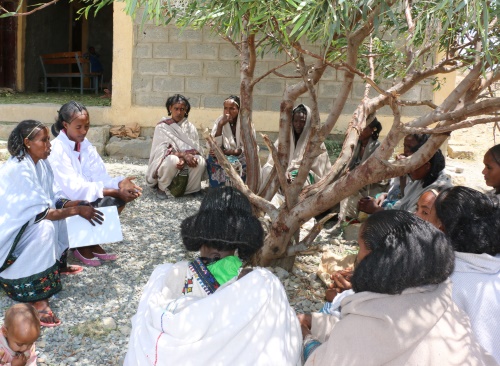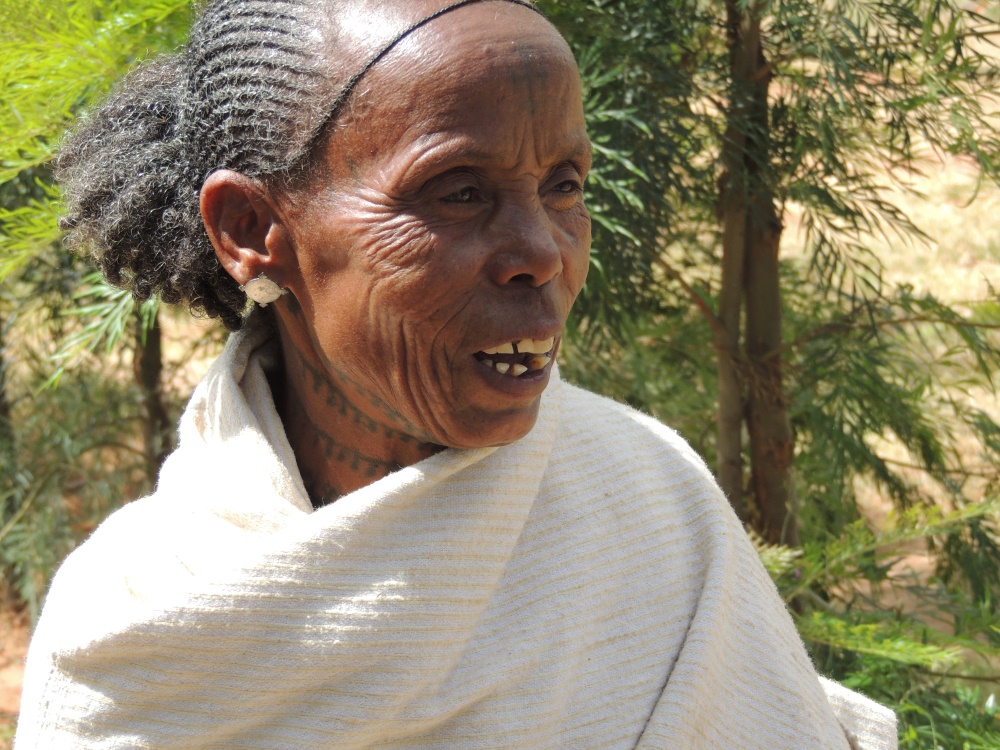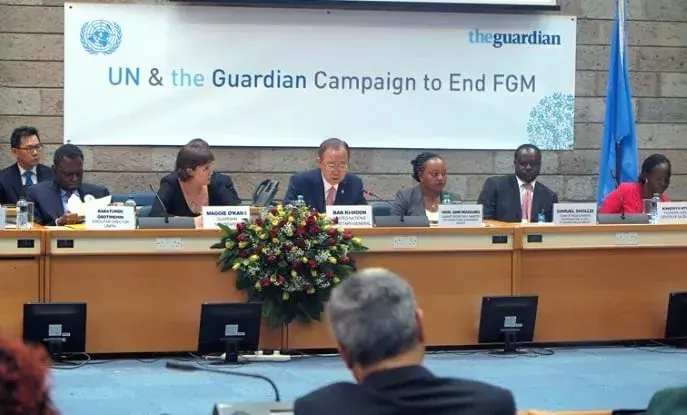Kolla Tembein, Tigray Region in Ethiopia – “I want to use my savings to finance my college studies without bothering my parents,” says Merhawit Mezgebe, 18, with a warm smile. She is one of 2,400 girls participating in a programme to end child marriage, which is being implemented in three Kebeles (localities) in the Kolla Tembein District in the Tigray Region of Ethiopia.
Currently in grade 10 at the local high school, she has been participating in the programme for the past two years. For her, it has opened a world of opportunities.
The practice of child marriage was widespread in the Kolla Tembein District, especially in the three Kebeles where the programme on ending child marriage has been supported. Girls as young as 10 years old used to be married off, says Daniel Hagos, Chief Administrator of the District.
Harnessing community structures
Three years ago a massive mobilization effort began, involving a wide range of partners working together to end child marriage. It is a mammoth task considering how deep-rooted the practice was in the community.

UNFPA has supported the programme for the past three years.
A key part of the programme in the effort to end child marriage is girls’ clubs, which are held at schools. Female students meet every two weeks; their discussions are facilitated by a trained female mentor, who is recruited from among the female teachers.
School-based interventions and financial literacy
Merhawit participates actively in the girls’ club at her school. Here, they are free to discuss any matters that may affect their future, such child marriage, HIV and AIDS, and life skills. The discussions are opening their eyes and sensitizing them to these issues, she says.
For instance, when members of the girls’ club see suspicious activities related to child marriage in their neighbourhood, they bring the matter to the attention of the female mentor, who takes it up through the right channels to ensure that appropriate measures are taken to bring it to a halt.
The girls participating in the programme are also benefitting from a financial literacy component, which has enabled them to open up savings accounts with the seed money they have been provided. This is bolstering the effort in the fight against child marriage and building hope among the girls participating, like Merhawit, who looks forward to a brighter future.

Bringing change through community structures
The effort has also reached other community structures, such as Women’s Development Groups, which help facilitate a social change process to ending child marriage.
Women’s Development Groups are a volunteer network of women. Each group consists of 30 to 35 women, who play a critical role in bringing about change in health matters for women. These include efforts to improve maternal health and to end harmful practices such as child marriage.
Atsede Girmay, who is a member of a Women’s Development Group, is one of four facilitators selected for training to educate members of her community about the harmful effects of child marriage.
The facilitators, who are provided with a training manual, receive additional training from community health workers. Each facilitator is tasked with educating a group of 35 adolescent girls and their families about why child marriage puts girls and women in harm’s way.
Ms. Girmay – and each of the facilitators – meets with her group of adolescent girls every Sunday to discuss child marriage. The details of the discussion are placed on file.
“We teach how child marriage isolates a girl, how it will force her to drop out of school, and how it will end in serious health hazards such as obstetric fistula,” Ms. Girmay explains.
We are getting remarkable results in the fight against child marriage.
The Women’s Development Groups work closely with schools to keep track of the girls, and to ensure that no girl drops out of school. “We are getting remarkable results in the fight against child marriage. We have made a resolution to continue these efforts, whether the programme support continues or not,” she says with conviction.
When girls are married off early
In Ethiopia, the median age at first marriage for women aged 25-49 years is 17.1 years, which is a slight increase on 16.5 years in 2011 (Demographic and Health Survey, 2016). Women marry about 6.6 years earlier than men, on average. In the Tigray Region, where Merhawit lives, the median age for first marriage for women is 16.6 years.
In some cultures, especially in northern Ethiopia, families enter into arrangements upon the birth of their sons and daughters to give them in marriage, which then takes place during adolescence. In other cultures, a man may ask for the hand of an underage girl in marriage.
In many cultures in Ethiopia, there is an indirect link between female genital mutilation (FGM) and child marriage. An uncut girl is considered ‘unclean’, not worthy of marriage, and a disgrace to her family. The percentage of circumcized women aged 15-49 years remains high at 65 per cent (DHS, 2016), although an 11 per cent decline has been recorded since 2005.
Across the country, quite a number of communities are abandoning these harmful practices, thanks to rigorous efforts being undertaken.
National commitment to end child marriage, FGM
In 2014, Ethiopia made an official commitment at the Girl Summit in London to end the practices of child marriage and FGM by 2025. This commitment has been articulated clearly in the country’s five-year development plan. A national social mobilization campaign was launched recently to end these two harmful practices by the set target date.
The Revised Family Code sets the legal age of marriage for women and men at 18 years. Under the Criminal Code, which criminalizes child marriage, perpetrators of child marriage face imprisonment.
Strict controls have been put in place at different levels of government to ensure that girls are not married off early. Girls’ increasing rate of enrolment in school is helping this effort – but child marriages still take place. When cases are brought to the attention of law enforcement bodies, the marriages are annulled and the perpetrators brought to justice.
The ongoing efforts to end child marriage in the Kolla Tembein District tie in well with the national one. Building on the remarkable successes registered, this district is among the three districts chosen to operationalize the UNFPA-UNICEF Global Programme to Accelerate Action to End Child Marriage.
My district will attain the commitment the country made to end child marriage before the set target date (2025).
There have been no cases of child marriage reported in the past three years, Mr. Daniel attests, and the drop-out rate among female students has been reduced to almost zero.
The aim now is to scale up the programme implemented in the three localities in Kolla Tembein District to the remaining 25 Kebeles, to end child marriage – for once and for all. “My district will attain the commitment the country made to end child marriage before the set target date,” Mr. Daniel states. His administration will go as far as allocating a budget from its coffers and will keep partners firmly engaged, he adds.
For Merhawit, the programme has given her hope for a brighter future – she aspires to become a journalist. If all goes according to her plan, we could one day be listening to her reading the news on the airwaves.
– Abraham Gelaw





